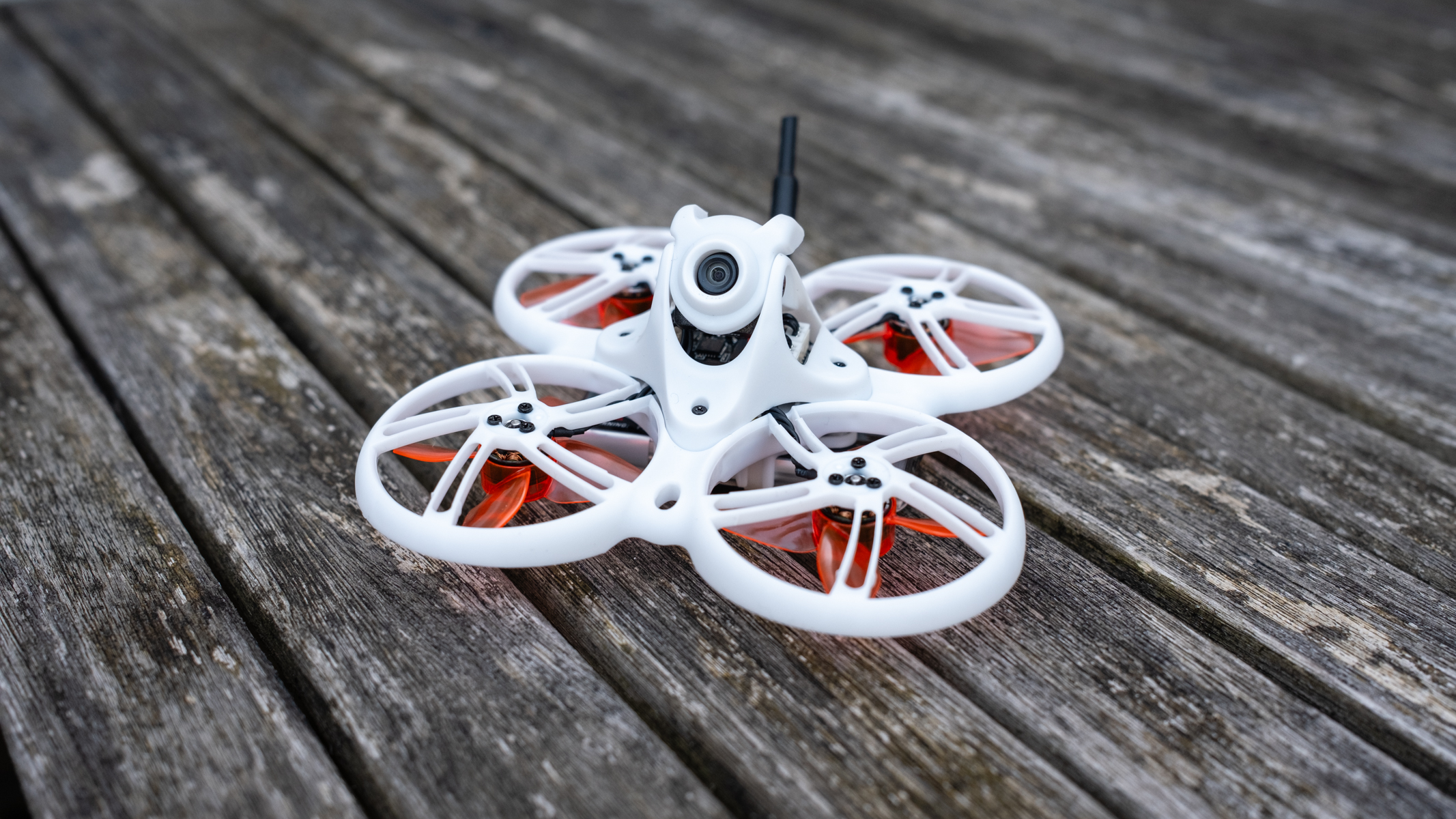
I have to confess that I can’t get enough of FPV drones, and the Emax Tinyhawk III Plus FPV Racing Drone RTF Kit has provided me with hours of fun. Like most FPV drones of its type, it doesn’t offer many features, but with Turtle Mode to flip the drone after crashes, a beeper to help find it if you can’t flip it, and an HD FPV feed, it's about as feature-packed as you can get.
The Emax Tinyhawk III Plus FPV Racing Drone RTF Kit is a drone for beginners kit, but it's not the most basic model the Chinese company produces, that's the Emax EZ Pilot Beginner Indoor FPV Racing Drone. Although it doesn't have the speed and agility of the Tinyhawk III Plus Freestyle, it's still a fast 1S drone that's ideal for beginners and performs best whizzing around obstacles like trees in parks and FPV racetracks made up of FPV gates and flags.
This drone is much more of a racing drone best suited to horizontal flight since the power-to-weight ratio doesn’t work well with flips and rolls. Whenever I tried the Tinyhawk III Plus always crashed; I could have pushed the throttle harder than usual to compensate, but muscle memory kicked in because I'm much more used to flying 2S and 4S FPV drones with more power. It was still a huge amount of fun, and the propeller guards gave me the confidence to fly close to obstacles.
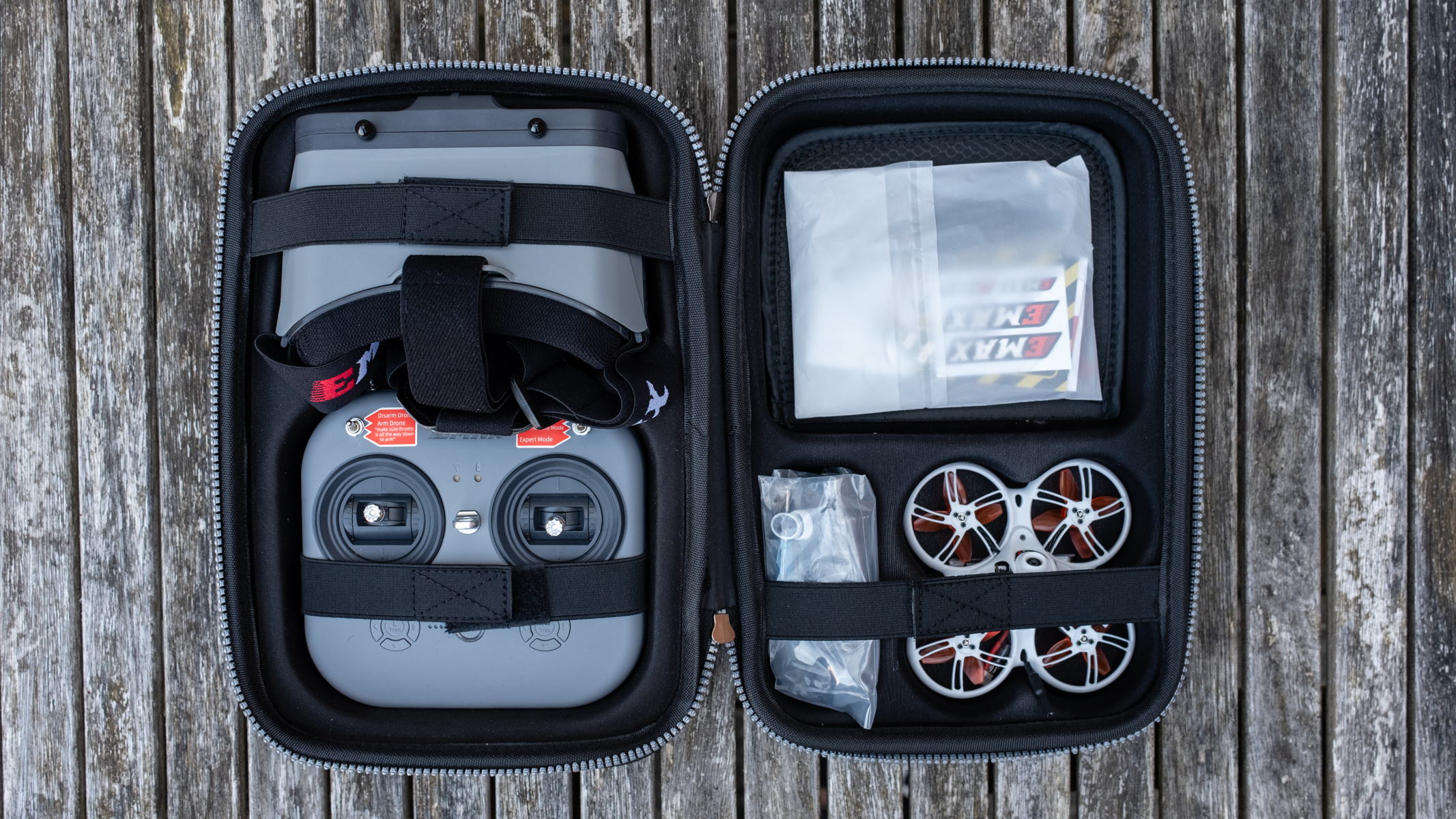
Emax Tinyhawk III FPV: Specifications
Emax Tinyhawk III FPV: Price
The Emax Tinyhawk III Plus FPV Racing Drone RTF Kit is a mid-range option in the Emax line-up, but with an HDZero VTX delivering an HD FPV feed, it's higher spec and more expensive than the analog version. One of the useful elements of the kit is that the controller, goggles, and batteries are also compatible with the Emax Tinyhawk III Plus Freestyle, which can be purchased separately with only the binding of the transmitter and drone required, which provides an upgrade path.
The kit includes the drone, Emax Transporter 2 HD FPV Goggles, Emax E8 Transmitter, Two 650mAh 1S batteries, two sets of propellers, a basic two-port USB 1S battery charger, a handy carry case for everything, and other accessories. It's not the least expensive kit of its type by any stretch, coming in at $490 / £383, but this is because of the digital VTX (FPV feed). It can be purchased from the main Emax website, the Emax USA website, and also appears on Amazon when in stock.
Emax Tinyhawk III FPV: Design & Handling
The Emax Tinyhawk III Plus FPV Racing Drone follows the standard design of micro whoops with a top-mounted, angle-adjustable FPV camera. Small propellers are below and are protected by propeller guards for indoor flight and flying close to and through obstacles. It's palm-size, but quite hefty at 260g / 9.17oz without a battery. The battery attaches to the bottom of the drone using two secure rubber bands that adequately hold it in place.
This weight means that being powered by just a single 1S battery, it's not suitable for freestyle/acrobatic flight. Some micro whoops have the correct power-to-weight ratio that allows them to be flown this way, but in reality, the propeller guards usually create a problem called prop wash, which is a type of wobble when coming out of dives and loops. Battery life ranged between 1.5 and 3.5 minutes depending on the wind speed.
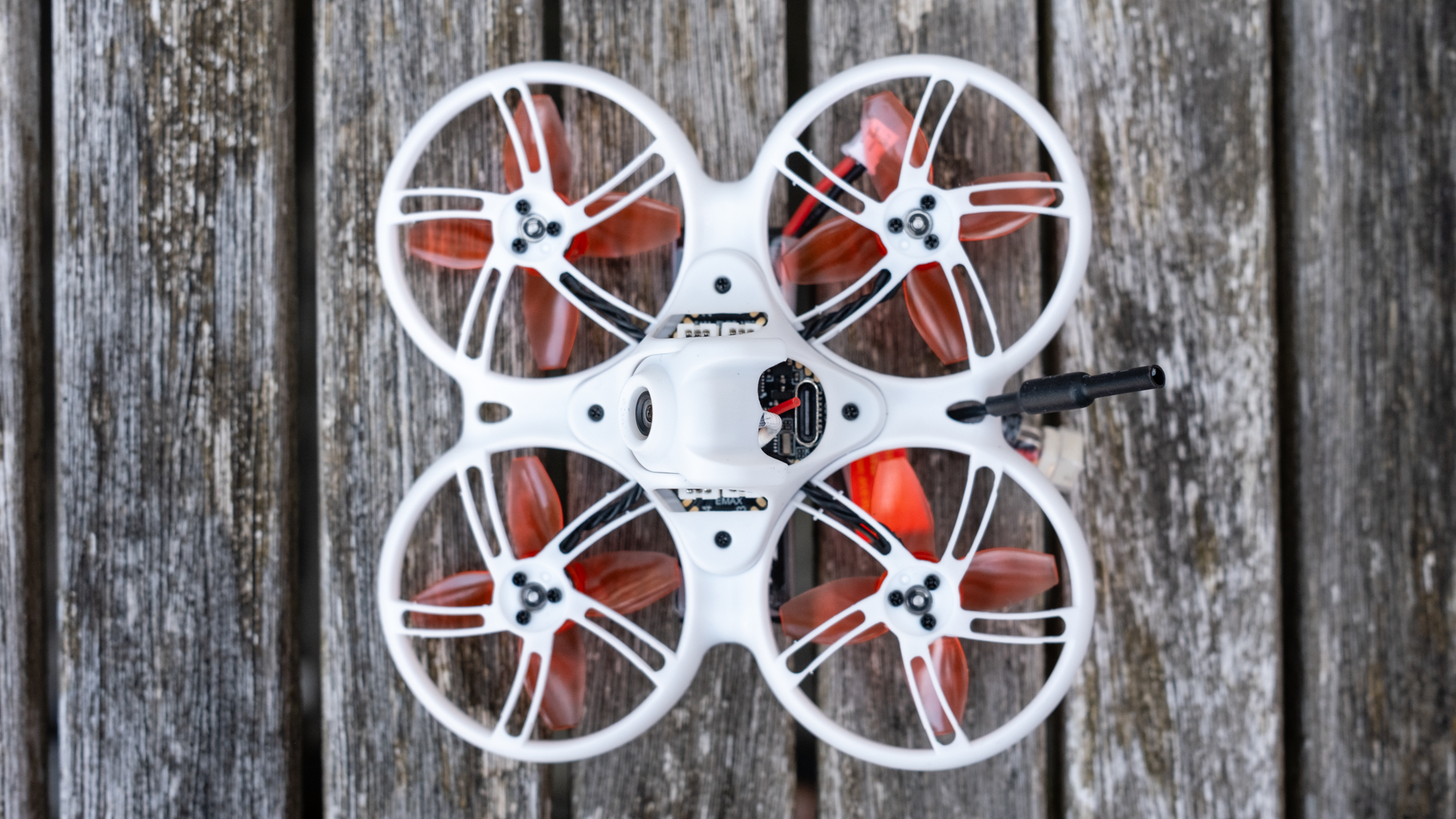
Despite the lack of power for stunts, it's still a fast and nimble drone, and with Level, Angle and Air (acro) flight modes, you can progress as a beginner through these flight modes. Air is the mode that provides the fastest flights and the best level of control, but it takes a lot of practice to learn how to fly. And despite the inability to roll, flip and loop, the Tinyhawk III Plus can still dive.
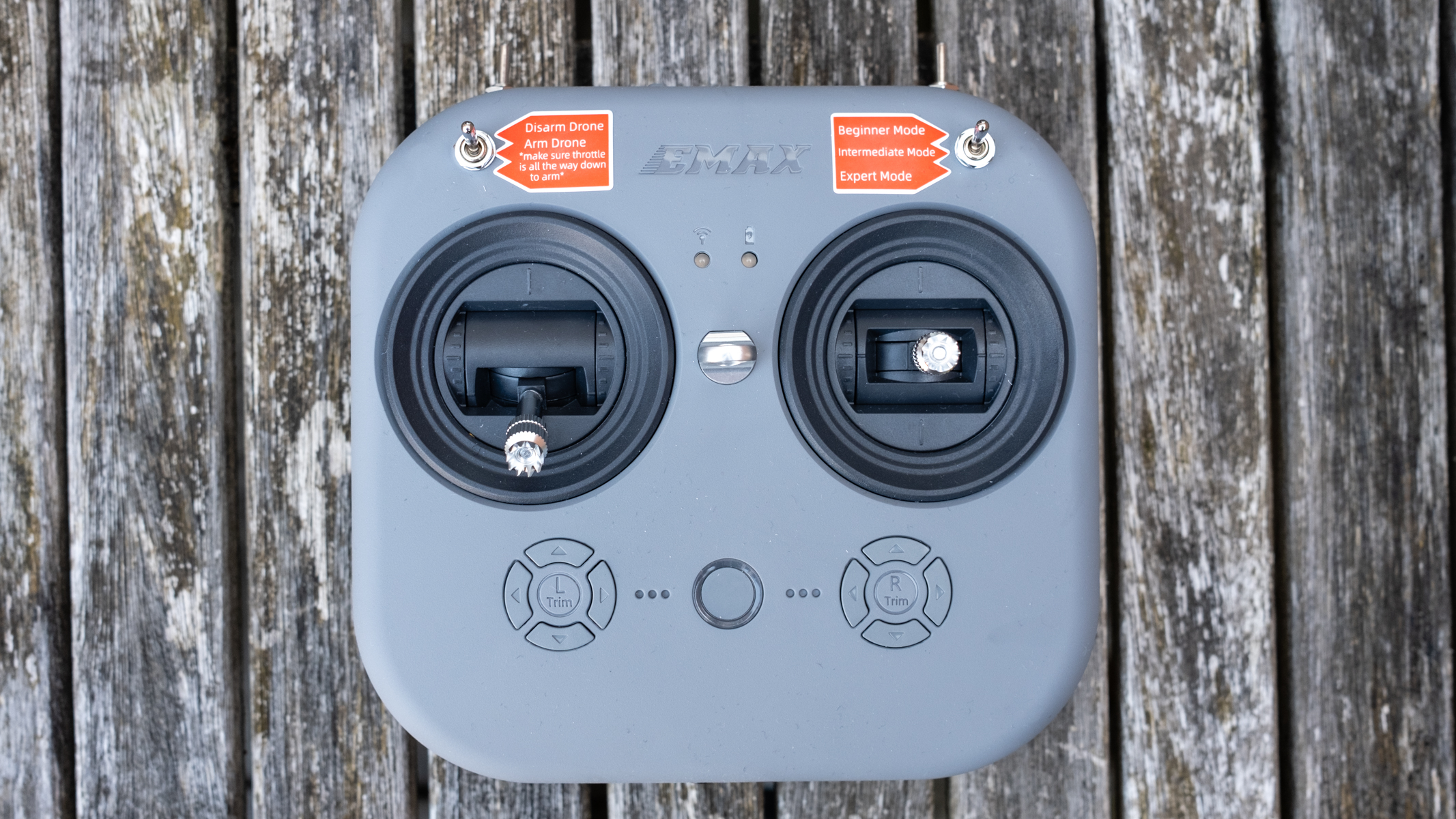
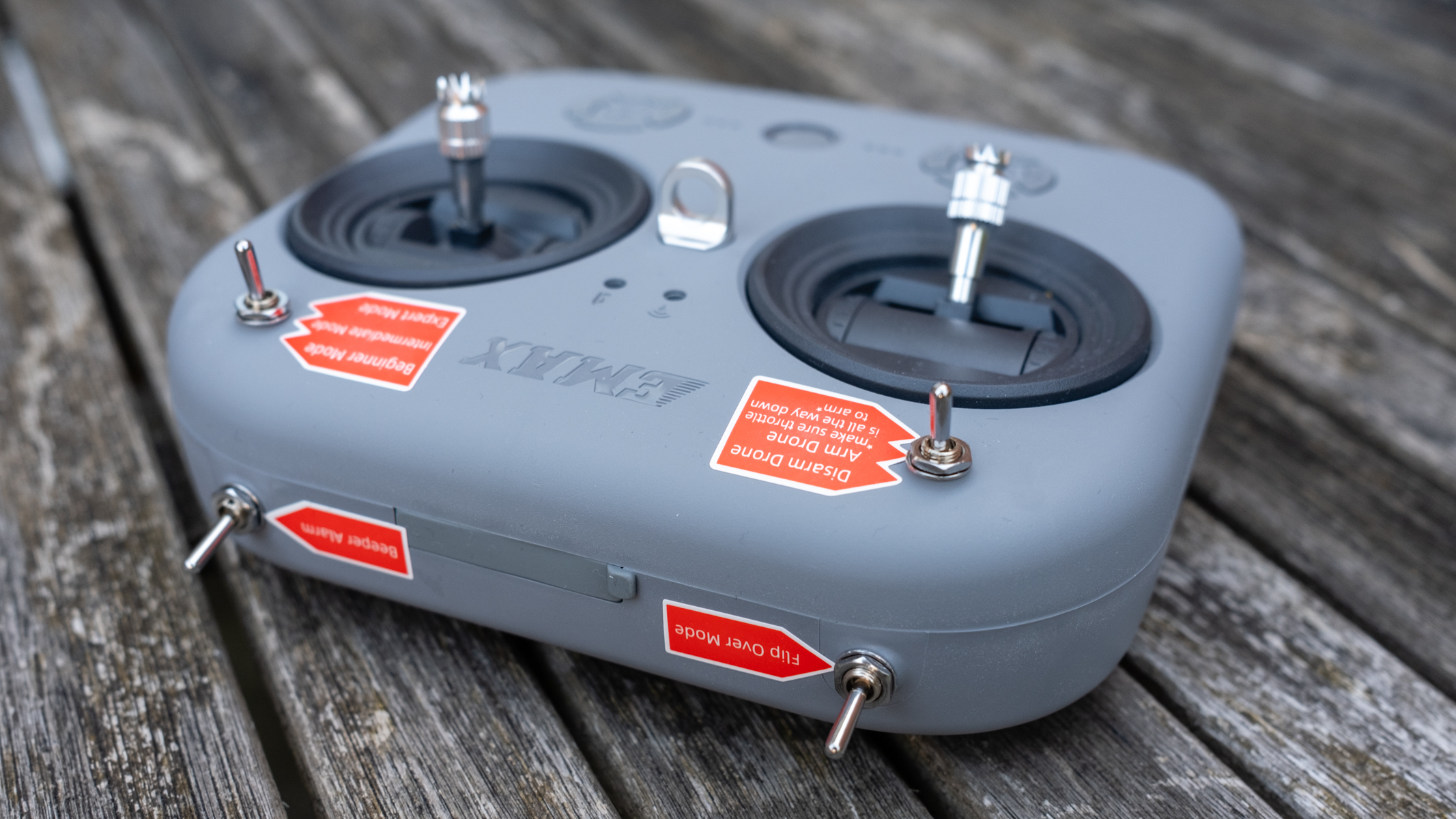
Moving onto the controller, this is the Emax E8 Transmitter, which is fairly basic but it offers eight channels and the power output can be set between 10 and 100mW. It can also be used to control FPV simulators on computers when connected via USB-C, which is a great way to learn how to fly FPV before heading out with a real drone. The E8 Transmitter is also comfortable to hold thanks to low-profile grips on the back.
The overall build quality of everything in the kit is great, although the included dual-port 1S charger is basic. Something like the VIFLY WhoopStor V3 1S LiPo Battery Storage Charger and Discharger is a much better and inexpensive option. Although the included charger does what it says on the tin perfectly well if you'd prefer to keep costs down.
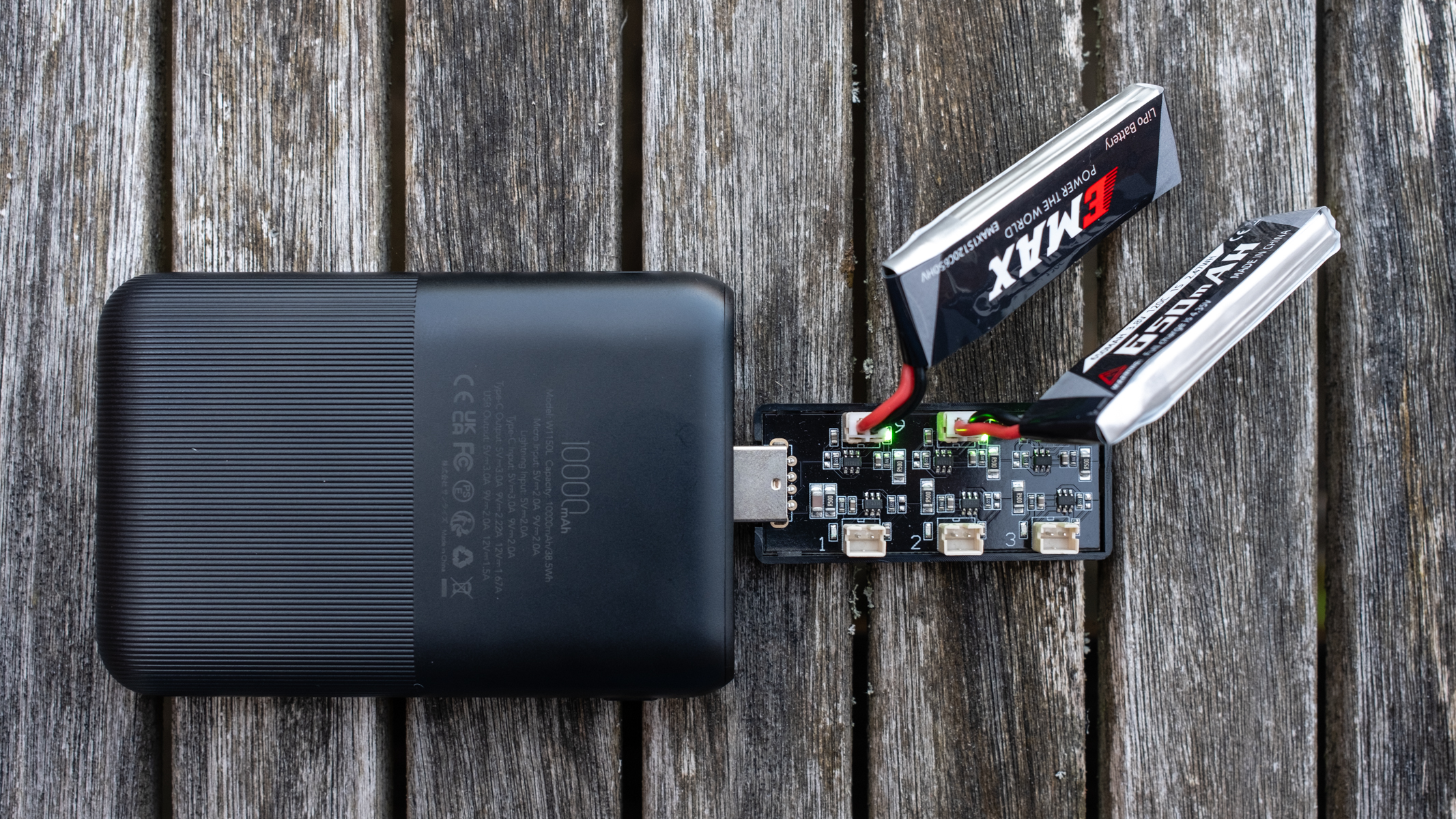
Emax Tinyhawk III FPV: Drone Performance
I've already discussed some of the Tinyhawk III Plus's flight characteristics, but we can go into a little more detail. The drone is easy to fly in terms of FPV drones, although there's no getting away from the reality that flying in acro mode (Air mode on the Tinyhawk III Plus), and even Level and Angle modes, takes some practice.
This is one reason why it's always worth getting an FPV simulator for your Mac or PC to get to grips with FPV flight in a digital environment where nothing can go wrong. Even though the Tinyhawk III Plus is tough, it's not invincible, and losing an FPV drone is quite easy when you don’t fully understand the controls.
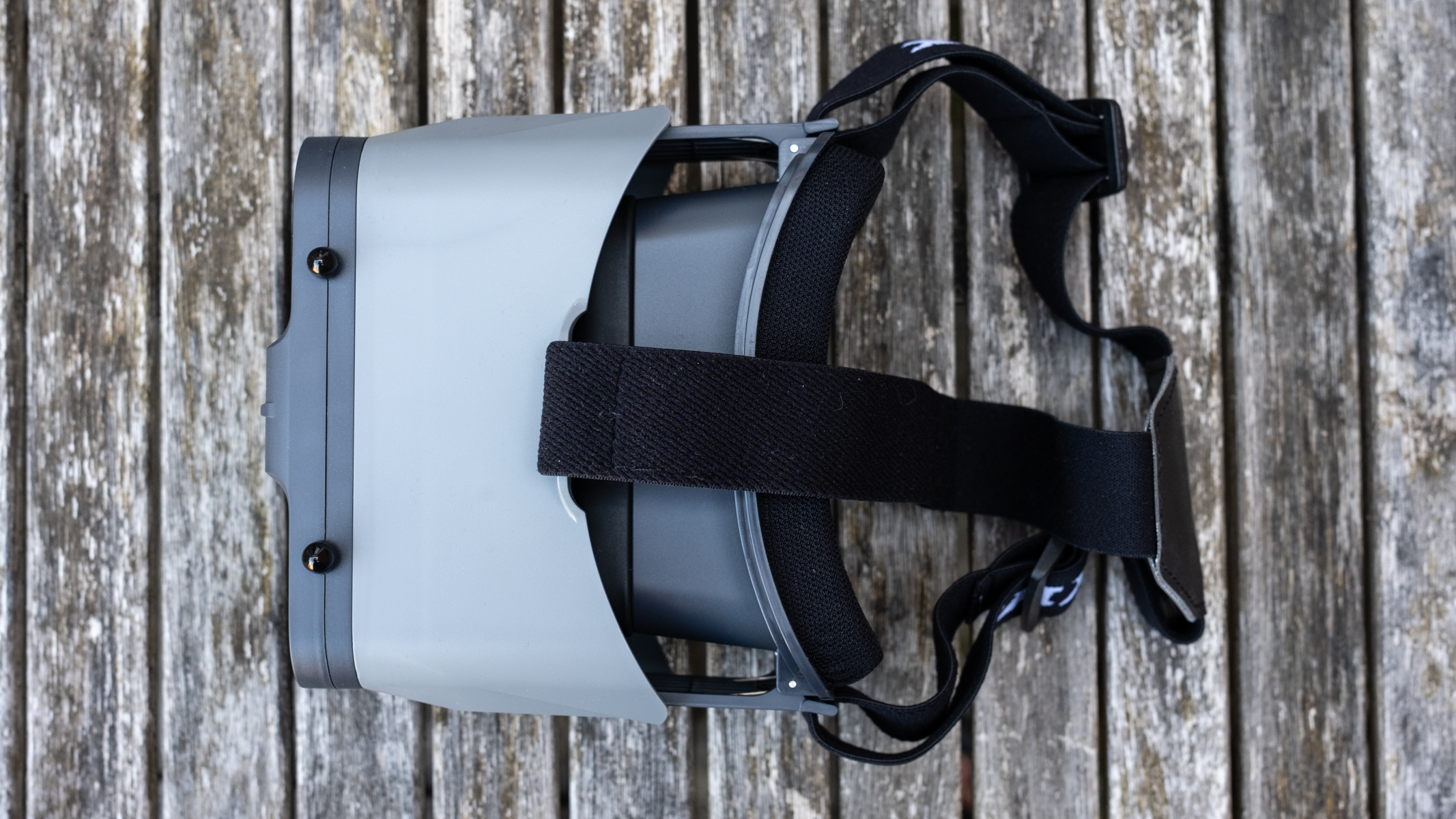
The Tinyhawk III Plus is a racing micro whoop drone so it can be flown reasonably fast for a 1S drone, but it's also easy to fly at what you might call a cruising speed; slowly bypassing trees and other obstacles that makes flights much more enjoyable. The range of the drone is difficult to quantify, but you can fly around a park without any issues depending on obstacles that can interfere with transmission.
When you crash, there's Turtle mode that allows the drone to be flipped remotely ready for take-off, and a beeper to help find the drone if you can’t see it. It's quite quiet though, so you need to be within a couple of meters of the drone to hear it. It is, however, still useful and helped me out a couple of times after crashing in the long grass.
The controls and drone are responsive with no perceivable lag so fast movements are possible, which is consistent with the racing aspect of the drone. As previously mentioned, the power-to-weight ratio means that it's not suitable for acrobatic flight where flips and rolls would require maximum throttle to maintain flight. But for speed, cruising, and horizontal agility, the Tinyhawk III is more than capable.
Emax Tinyhawk III FPV: VTX performance
The Tinyhawk III Plus uses the same HDZero Nano Lite Camera as the Tinyhawk III Plus Freestyle. Yeah, the naming is a bit confusing with 'Racing Drone' and 'Freestyle' in the names being the key differentiators. This camera transmits a 720p 60 FPS (1280x720px) image to the Emax Transporter II HD goggles, which are box goggles, with a detachable 4.5-inch 60Hz TFT screen that can also be attached to the E8 transmitter with the included accessories.
The image itself is clear and sharp, and the FPV feed can be recorded in the goggles thanks to a built-in DVR when a microSD card up to 64GB is inserted. This is a great way to watch your flights afterward with all of the goggle information present on-screen. There is a small amount of vignetting at the edges of these videos because the HDZero Nano Lite Camera is slightly recessed in the camera housing, but you don’t notice this during flights – only when playing videos back on a larger screen.
The digital feed is unique in that it suffers from interference and image break that looks similar to analog systems. As you near the limit of transmission, the image breaks up more and more, rather than simply freezing or pixelating heavily like most digital systems. This is great because you can turn the drone around before you completely lose the signal to the goggles.
Emax Tinyhawk III FPV: Verdict
The Emax Tinyhawk III Plus FPV Racing Drone RTF Kit was a pleasure to fly, mostly in parks featuring lots of obstacles to fly around and through. I did try some basic aerial stunts but the power-to-weight ratio wasn't enough for these to be successful. For cruising slowly and at speed, however, and when darting around obstacles, it's a little ninja.
The build quality is excellent and the design is robust – I did crash a few times trying my luck with tight gaps, but the drone experienced no damage whatsoever. Battery life ranged from between 1.5 and 3.5 minutes depending on the wind speed, with more wind demanding more power from the motors for flight. So, all in all not bad at all since lower wind conditions are better for drones like this. It's not the least expensive option available, but reasonably priced for an FPV kit with a digital VTX.
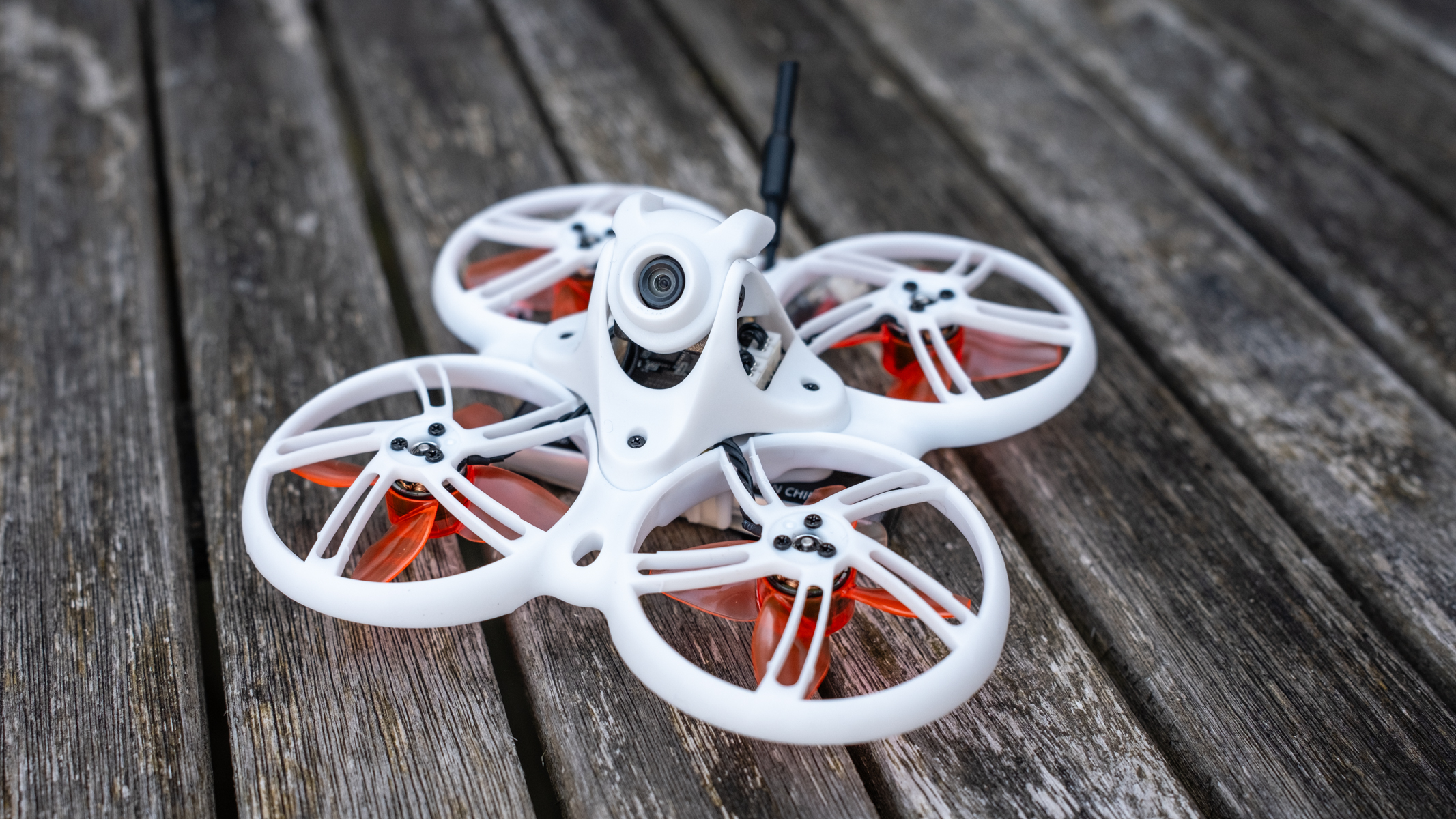
✅ Buy it...
- If you'd like a beginner FPV kit with a digital VTX (FPV feed).
- If you'd like a kit that offers an upgrade path to a more powerful mini freestyle drone.
🚫 Don't buy it...
- If you want to learn how to fly freestyle this drone lacks the power required.
- If you're on a budget there are cheaper analogue kits available.







